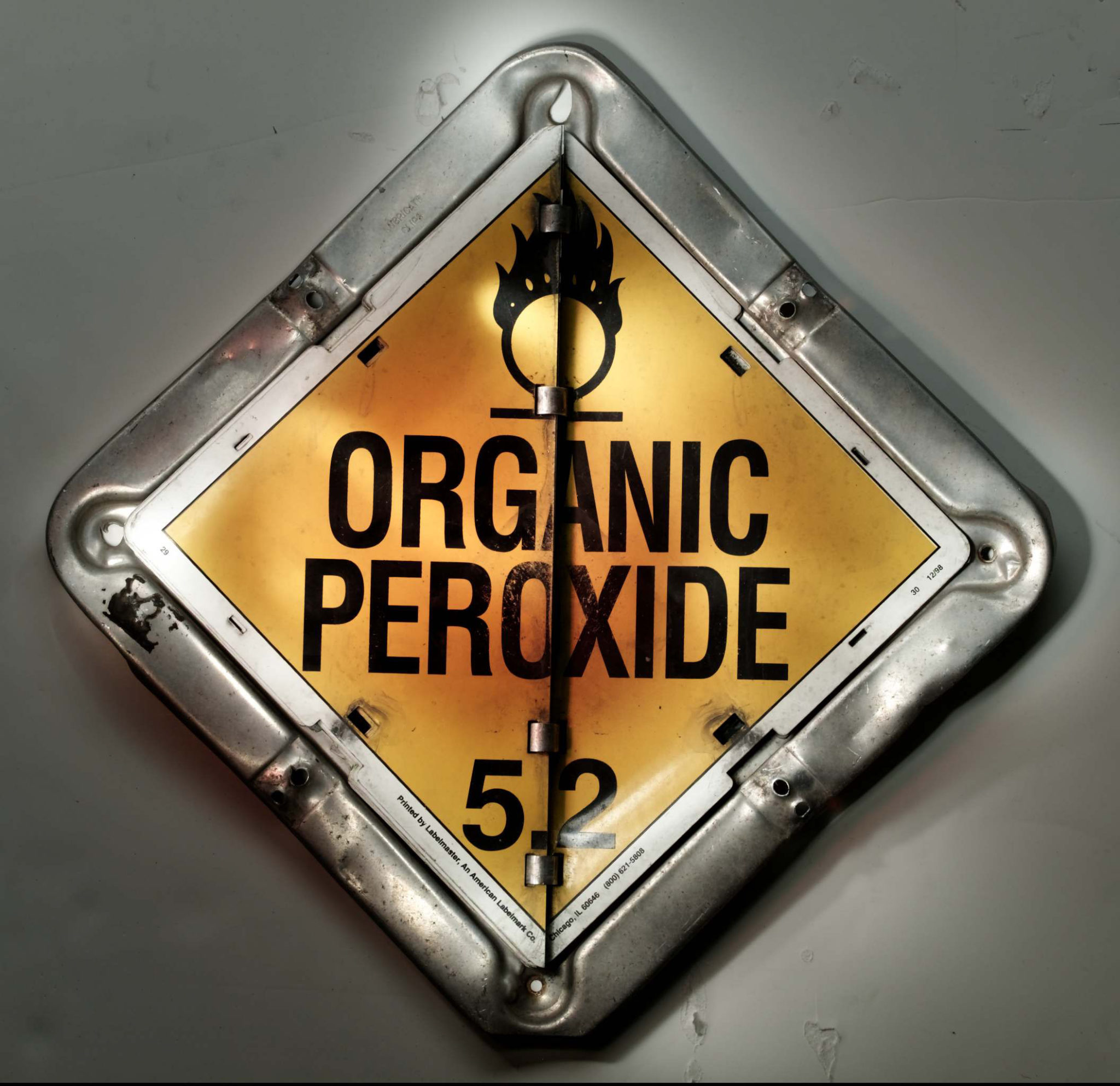Organic peroxides are highly useful chemicals which are used in a wide range of laboratory and plastics manufacturing applications. They are also unstable and require care during transportation, handling and storage.
Common Uses of Organic Peroxides
Organic peroxides are carbon-based chemicals with two oxygen atoms joined together by a single bond. This single bond is easily broken, so they can decompose quickly and react easily with many substances. Because of this, organic peroxides can be used to start or assist many chemical processes. Organic peroxides are most often found in the plastics and rubber industries. They can serve as initiators, accelerators, promoters, catalysts, activators, cross-linking agents, curing and hardening agents, and more. Organic peroxides are also found in many chemistry laboratories, and are sometimes used in the production of explosives.
Hazards of Organic Peroxides
Organic peroxides are unstable and react easily. They contain both oxygen and organic matter, so they burn easily. They can also give off flammable gases or vapors. For these reasons, the biggest concerns with organic peroxides are fires and explosions. They can catch fire easily, burn vigorously and are hard to put out. Some can explode with heat or pressure. Some must even be kept refrigerated because room temperature is hot enough to cause a fire. Many organic peroxides can also have violent reactions to other materials, including many metals, acids and bases. Some even react to impacts, shock or friction. Most organic peroxides are also corrosive and can damage skin and eyes. Finally, most are toxic if inhaled or ingested.
Types of Organic Peroxides
Organic peroxides are divided into 7 types, types A through G, based on their ability to explode, catch fire or have a violent reaction. Type A are the most hazardous and type G are the least. Type A organic peroxides are so dangerous they can spontaneously explode inside their own packages. It is rare to find type A organic peroxides anywhere except chemical manufacturing facilities. Type G organic peroxides have almost no fire risk. Most facilities will only use types E, F or G. These don’t explode and have low fire risk, but they can still be corrosive and toxic. Many can also change types and become more hazardous if they dry out or mix with other chemicals.
 Safe Handling and Storage
Safe Handling and Storage
The necessary measures for handling, storing and disposing of organic peroxides depend on the type and amount of organic peroxides used. In general, they should be stored away from other flammable materials and sources of heat. Sometimes special systems such as ventilation, climate control and fire suppression will be needed. For more unstable types, special explosion-proof electrical systems, spark-proof tools and other safety equipment may be required.
Employees should never handle organic peroxides without proper training. All procedures involving organic peroxides should be followed carefully. Organic peroxide areas must be kept clean, and any damaged or malfunctioning equipment or safety systems must be reported immediately. Restricted access policies must also be followed, and security measures should be in place to prevent unauthorized access. Anyone working near organic peroxides should be trained to recognize alarms and warning systems, and should know when and how to evacuate in an emergency.
Organic Peroxide Exposure
Most organic peroxides are corrosive, even many Type F and G formulas. Always wear all recommended personal protective equipment, including gloves and eye protection, to keep organic peroxides away from skin and eyes. If organic peroxides do contact skin or eyes, flush the area with clean, running water for at least 15 minutes. If they splash onto clothing, quickly remove it, flush the skin beneath and wash the clothes.
Inhaling hazardous amounts of organic peroxides should not happen if ventilation systems are working and proper procedures are followed. Similarly, accidentally ingesting organic peroxides should not happen if employees wash their hands and don’t eat or drink around organic peroxides. If any type of exposure is suspected, check the peroxide’s label or safety data sheet for first aid measures. Seek medical attention if symptoms appear.
Conclusion
Organic peroxides are very useful, and most formulations used by workers are safe if handled correctly. Unfortunately they can be very dangerous if used incorrectly, so it is vital that workers understand the risks and the importance of following the rules.
If you would like more information about working with reactive chemicals, including organic peroxides, the Occupational Safety and Health Administration, or OSHA, provides a great guide to recognizing, evaluating and controlling reactive chemical hazards.
The Canadian Center for Occupational Health and Safety also provides a handy guide to working with organic peroxides.
Texas A&M University also offers a more in-depth look at the properties and hazards of organic peroxides and peroxide-forming compounds in this paper.
Finally, if you have any questions or concerns about a particular organic peroxide in your workplace, contact the chemical supplier for more information.
SafetySkills covers this topic and more in our Organic Peroxides course. For more information, click here.



 Safe Handling and Storage
Safe Handling and Storage
